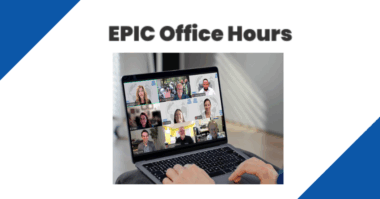Last month, Rebekah Mechtensimer shared her 5 Tips for Creating Quality Social Posts…. which inspired me to write about a few best practices for businesses who want to leverage the capabilities of LinkedIn to grow their network and ‘fuel’ their sales pipelines.
Here are some of the more common questions the team at Empowering Brands receives, along with our answers to hopefully help your marketing team do their best.
Q. How can our organization build our LinkedIn network?
A1: Make sure all important “Faces” of the company have a profile on LinkedIn. Encourage all company employees to like and follow the company page. Ask the leading ‘faces’ to publish Thought Leadership pieces from their LinkedIn pages that can then be picked up and shared through the company page. (Read How to Build a Strong Personal Brand).
A2: Start by connecting with everyone you know or have worked with. You can ask each sales person to send a message inviting their network to follow / like the company page. (*Note: I believe LinkedIn message maxes out at 50 people per message, but you can see more detailed instructions here: https://www.linkedin.com/help/linkedin/answer/62003/sending-a-message-to-multiple-recipients?lang=en)
A3: Another suggestion is to send an email to your subscribers inviting them to follow your company on LinkedIn. In the message, mention that your company will be posting information aimed to educate, benefit, and support them. You can be as detailed as you want, but the more detail on the content to be posted on your social channel, the better!
Tangent: Check signature lines in email to make sure that social handles for your company are linked there. It may be something you have to get approved and set up through your IT staff, but having a standardized signature line with social links included is a best practice.
A4: A great way to grow your connections on LinkedIn is to really interact with them. We want to do more than just send an invite – we want try to leave thoughtful comments on posts they share, share their posts if they are deemed relevant for your target audience, and sending them direct messages when there is an opportunity to ask if there’s a way you can help them out.
If your sales people are posting regularly, you can look at those folks who are commenting on those posts – those are people your organization might want to connect with.
A5: Get involved with Relevant LinkedIn Groups. Interesting stat… according to quicksprout.com, “86.3% of conversations that eventually led to a sale from LinkedIn came from a conversation in a group”. Start searching for LinkedIn Groups using words or short phrases related to your area of expertise or to your audience. Once leaders within the company join LinkedIn Groups, they can set goals to connect with members in that group… this often takes time to click and review a person’s profile to see if that person is really someone you want to connect with, but if each person decides they want to set a goal of asking for 10 new connections a week, then it’s a good goal to set internally.
Remember to pay attention to the Rules of the LinkedIn Groups you join. The purpose of participating in that group is to connect and engage with purpose, so don’t join a LinkedIn Group just to post a “sales-y” message there – that is a fast way to get kicked out of the group! So read and follow the rules!
Q. Which types of posts should our company share on LinkedIn?
A1: Thought leadership. Any posts that talk about your company’s area of expertise in the form of educating a reader is the most important type of post to share. There are areas where your company is leading the way, aspects that really differentiate your company from its competitors, so make posts that really showcase your company’s value to the audience you’re trying to reach.
A2: Events and Social Interactions. Pictures with people in them will always be more interesting to an online viewer. It’s important to show how your company is engaging at industry events or in programs that benefit others (such as 5Ks that the company might run, bbq’s, charity drives, etc.) If your company has programs to support the community, share that news!! Those are ‘feel good’ posts that are deserving of attention and celebration!
A3: Benefits of Products. Many manufacturers are moving away from product selling to relationship selling – and growing a social network is all about building relationships. If your company does want to promote a product (which is often considered the most ignored type of social posts), the main focus for that post should be the benefit to the user of that product. It’s better to explain the ‘why’ for that product – the solution that is being offered as an answer to a problem or challenge. Always make sure to have call-to-action (CTA) in these types of posts.
I hope this has been helpful! If you have any questions or would like to set up a consulting session, email us at social@empoweringpumps.com.




